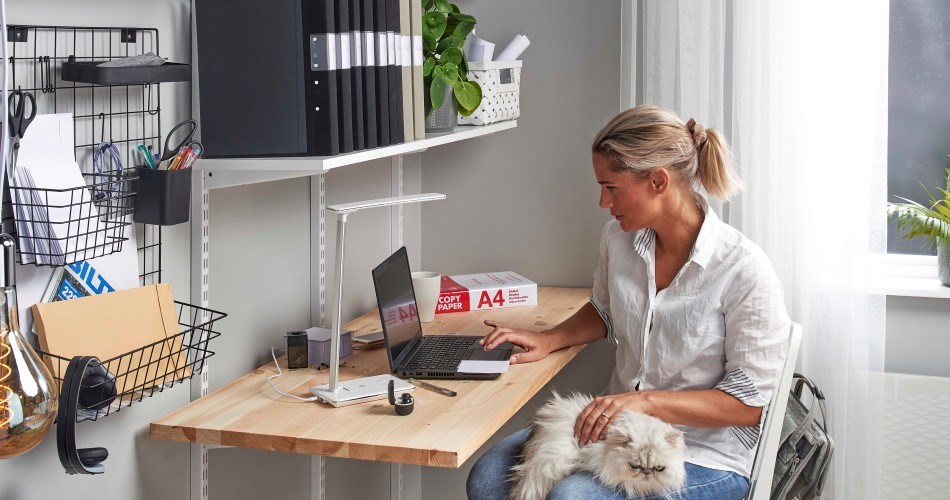Creating an Ergonomic Office – important aspects to consider
1. Work chair and sitting posture
Having an adjustable office chair with a good backrest and comfortable cushion is crucial for a correct, ergonomic sitting posture. The work chair needs to be adjustable to suit different body types and it should offer individual adjustment.
When sitting in your work chair, your feet should be flat on the floor, or should use a footstool to support your legs. You should also be able to sit upright with your back straight, with lumbar support to prevent straining your back and neck.
2. Desk – height and design
An ergonomic desk should be height adjustable so that it can be adjusted to the user’s height and posture. Make sure your desk is always at the correct height, with your keyboard and computer mouse at a comfortable height. This helps to prevent harmful strain on your neck, back, shoulders, and wrists. Make sure you place the computer monitor and keyboard at a height where you can work with straight and relaxed arms, and a neutral neck.

3. Position and distance to the computer screen
You should have your computer screen placed at eye level, about 50-70 centimetres from your face. This helps to minimise strain on your neck and eyes. Adjust the brightness of your computer screen to a level that’s comfortable for your eyes, and avoid reflections on the screen as you work.
4. Keyboard and mouse
To reduce the risk of discomfort such as mouse hand syndrome, it is important that you have an ergonomic keyboard and computer mouse. Position your keyboard so that your forearms rest comfortably, and use palm rests to relieve your wrists. Also, try to avoid bending your wrists too much when using the mouse, and choose a computer mouse that fits your hand size and grip.
5. Lighting
Good lighting in your office is incredibly important for your eyes. If you do not have proper lighting, you risk straining your eyes, which often leads to headaches.
6. Important movement breaks
Office work often involves being very sedentary, which can be harmful to your long-term health. Our bodies are simply not built for sitting around for long periods. Therefore, it is important that you take small movement breaks during the day. You can take a short walk at lunch or just a five-minute break to stretch your body.
Anything that increases blood circulation helps you to prevent muscle tension and sore body parts. A good solution is to have a height-adjustable desk, so you can switch between standing and sitting during the day. Another good idea is to stand on a balance board while working.
7. Ergonomic office accessories
Use ergonomic accessories to improve your working environment. Equip your office space with wrist rests, footrests, an ergonomic keyboard and mouse, or an adjustable office chair.
By being aware of and applying these important ergonomic aspects, you get a better working environment where you can be productive and feel good. An ergonomic workstation is an investment into your health and well-being.




